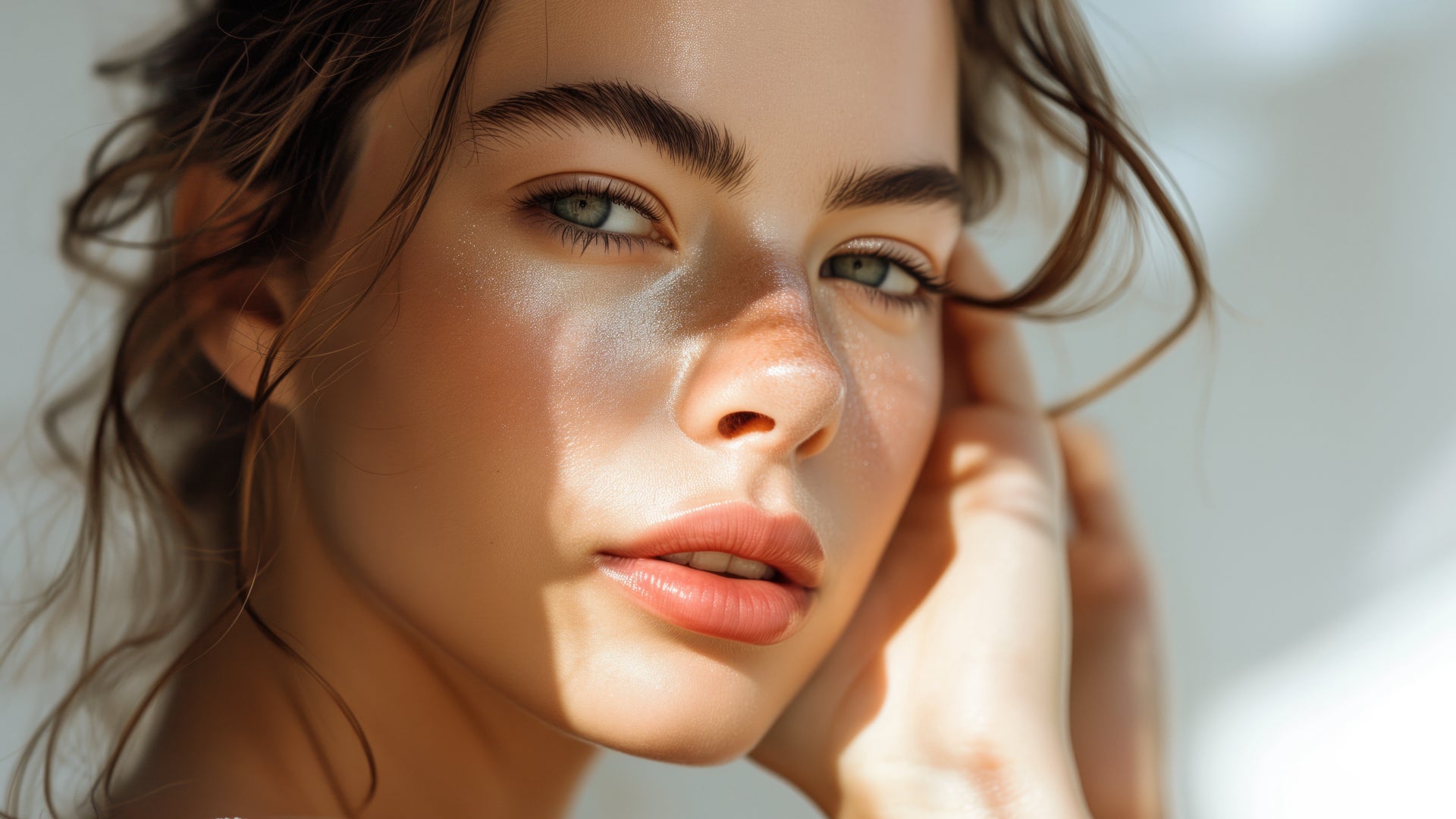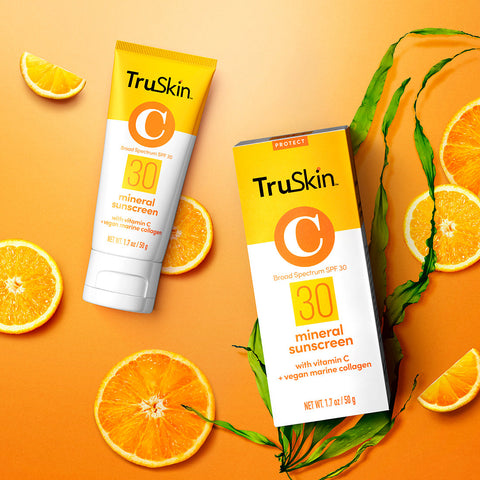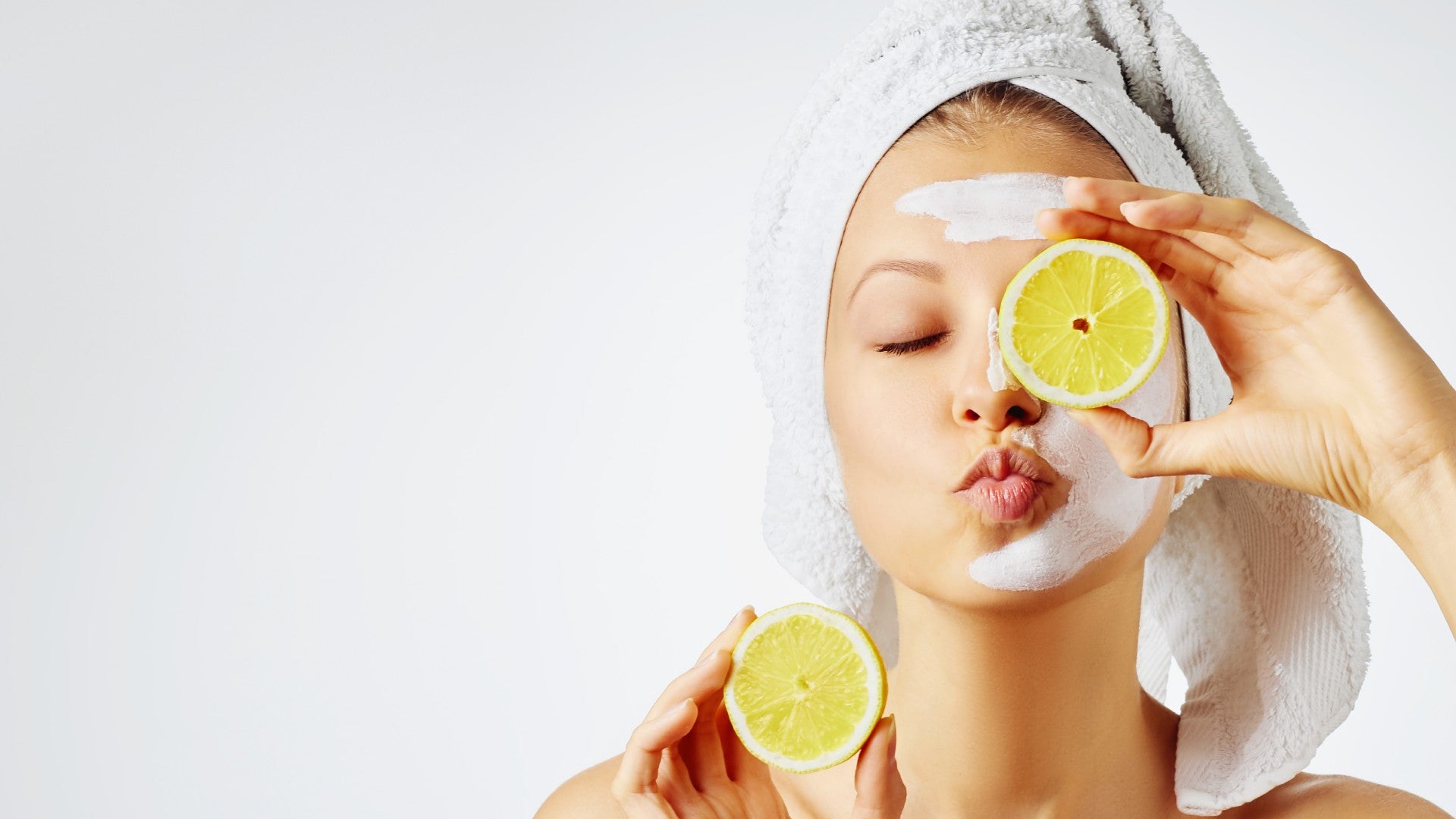
Don’t Let Dark Spots Mess With Your Skin
It's time to wave goodbye to unwanted dark spots that spring up on your face from literally nowhere. Agreed? Then let’s do this.
What a pain in the butt dark spots are. Just when you’ve finally learnt to embrace your crow’s feet and gotten to grips with pesky hormonal acne spots, an unidentified patch of dark skin shows up on your forehead or cheek. What the heck is that all about?
Dark spots are known in the skincare industry as hyperpigmentation and while they’re rarely harmful to your health, they’re super, like super annoying. They’re also extremely common and are caused by an overproduction of melanin – the pigment that gives your skin (as well as your eyes and hair) its color. If you have dark skin and hair, this is because they contain more melanin and if you’re blonde and fair, well, you get our drift.
This is all simple enough, but when melanin production gets a little wayward and unwanted patchy areas of darker-than-normal skin crop up on your face (of all places), things get a little more complicated…
Not All Dark Spots Are Created Equal
There are three main reasons for uneven melanin production: the sun which, frankly, is to blame for a LOT of skin concerns; your hormones (ditto), and some kind of trauma to the skin such as acne spots or a burn. Diagnosing the exact type of hyperpigmentation you have might not be in your skillset, but here’s what you need to know to help you get an idea.
The Sun Spots: Solar Lentigines
You may be under the impression that melanin naturally protects your skin against UV damage and yes, it’s true darker skin is less likely to burn or suffer from photodamage. However, anyone can be affected by sun damage warn experts at the American Cancer Society. If you think, therefore, that you’re actually helping to protect your skin by tanning, think again – when you tan, this is simply a sign that your skin is releasing melanin to try to protect itself. And it can only do so much before your skin inevitably becomes prematurely damaged and shows signs of fine lines, wrinkles and sagging.
In some cases too much sun causes melanin production to become uneven and this is when irregular dark patches appear on the skin, called solar lentigines. According to the Mayo Clinic, solar lentigines are usually small brown, black or gray spots and appear on the most exposed areas of your body such as your face, hands, arms and upper back. Unlike moles they can’t turn cancerous, but if you’re a total sun worshipper watch your back (literally) because these are bound to get you in the end. You have been warned.
The Hormonal Spots: Melasma
Melasma is light brown or gray-ish brown in color and is most commonly experienced on the forehead, around the lips or over the cheeks and nose. It’s usually triggered by an imbalance of hormones which, just like the sun, send your melanocytes (the cells that produce melanin) wild.
According to the American Academy of Dermatology (AAD), women are far more likely to get melasma than men due to hormonal life changes such as pregnancy, menopause, taking birth control pills or hormone replacement therapy (HRT). Melasma is also more commonly seen on people with darker skin tones due to their skin containing more active melanocytes.
The good news is that melasma often fades of its own accord once your hormones balance themselves out, but this is not always the case so it's always wise to treat it as best you can. Oh, and that devilish sun will make it ten times worse. We told you the sun was an evil beast.
The Trauma Spots: Post-Inflammatory Hyperpigmentation (PIH)
Unlike solar lentigines and melasma, post-inflammatory inflammation can be red, pink, brown or black depending on the tone of your skin and the depth of the pigmentation.
PIH happens when your skin becomes inflamed and consequently scars due to some kind of trauma or injury. This trauma can include anything from acne and eczema through to bug bites and burns. You know how experts are always telling you not to squeeze spots or scratch at your eczema? Well, PIH is one of the main reasons why. Post-inflammatory hyperpigmentation can also be triggered by improper use of skin treatments like laser therapy or dermabrasion which is why we recommend only ever letting a board-certified skin expert loose with such high-powered treatments on your skin.
Anyone can get PIH at any time in their lives although it’s most common in darker skin tones. And no prizes for guessing what makes it worse. It begins with an ‘s’ and ends with an ‘n’…
Prevention Is The Best Cure
The Sun: not only does it cause a whole crop of hyperpigmentation issues, but it makes every single kind so much worse. This is why sun protection is the single most important way to improve it.
Invest in a physical sunscreen containing zinc oxide, titanium dioxide or a mixture of both and apply this every day to help prevent sun-induced discoloration. And yes, we mean every single day of the year – even on cold, gray days when you might not feel it, but that sun is still there doing a number on your skin. Not keen on adding yet another step to your daily routine? Then look for a moisturizer, primer or even a foundation that contains a broad-spectrum sunscreen of SPF 30+.
3 Awesome Ways To Treat Dark Spots At Home
High-tech options like professional chemical peels, intense pulsed light treatments (IPL) and microdermabrasion are awesome ways to target dark spots at the doctor’s office, but there are also plenty of effective skincare solutions that have been proven to work. Just remember, the below are all potent, active ingredients so you should patch test all new products first and avoid overloading your skin with too much at once.
1. Alpha Hydroxy Acids (AHAs)
AHAs such as glycolic and lactic acids are great for increasing cell turnover and ridding your complexion of dead, discolored skin cells that may lurk around on the surface of your skin longer than you’d like.
Glycolic acid is ideal for treating melasma in particular, but lactic acid is more moisturizing and better tolerated by the skin. So, take your pick. Or better still, look for a gentle but effective treatment that contains a combination of AHAs like our Eye Cream – perfect for brightening the skin around your eyes.
2. Vitamin C
Including a vitamin C antioxidant serum in your daily routine is another great shout for fading dark spots. How so? Research shows that vitamin C may help decrease melanin synthesis. So, there’s that. Vitamin C is also mildly exfoliating, works hard to minimize redness and helps prevent sun damage by battling damaging free radicals that form in the skin due to overexposure to the sun.
You’re probably well aware of what big fans of vitamin C we are – after all, TruSkin was born from our famous Vitamin C Serum. But don’t just take our word for it. Check out the never-ending reviews on Amazon to see what everyone has to say about this amazing, skin brightening formulation.
3. Retinol
Any dermatologist will agree: topical retinoids such as tretinoin (prescription-only) and retinol (over-the-counter) are fabulous for minimizing unwanted discolorations.
Retinoids work by turning into retinoic acid when they’re applied to the skin. Retinoic acid is the active form of vitamin A and is basically the special sauce that ‘communicates’ with your cells to increase turnover, boost collagen and therefore reduce hyperpigmentation. Retinol can also help treat acne and reduce fine lines and wrinkles but that’s a different story for another day.
The Serious Side Of Dark Spots
We don’t like to cause alarm, but some pigmentation issues are not to be treated lightly. Moles that change in color, shape, texture or just start to feel or look wrong should always be checked out by a doctor or qualified expert to rule out serious concerns such as melanoma. Similarly, patches of odd-colored skin that are itchy, dry, start bleeding or become inflamed should also be seen by a professional immediately.
The chances are your discolorations can be easily treated, but better to be safe than sorry, right?















